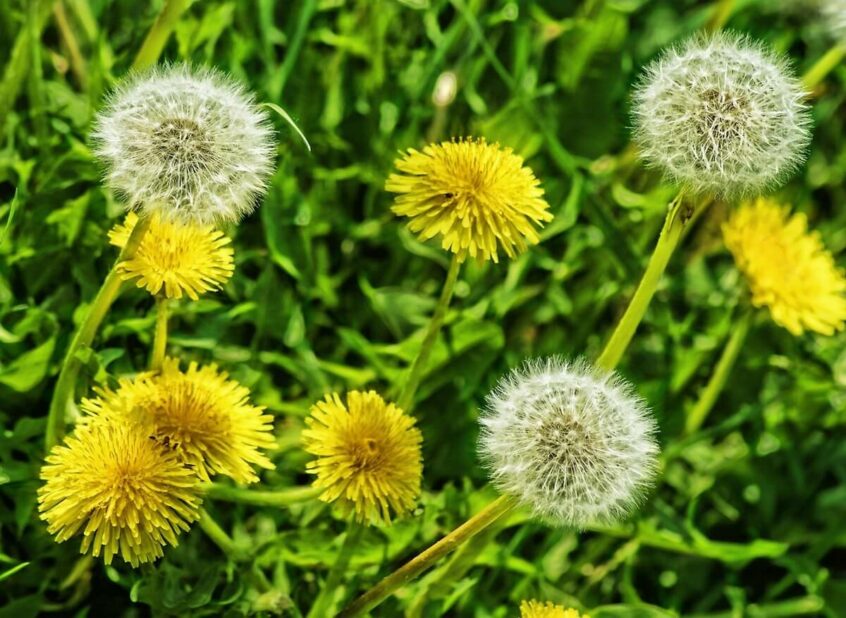Do you find yourself picking weeds while you chat with your neighbor outside? Do you find you want to call TruGreen or some other treatment company on Saturday night after you’ve spent all day spraying, whacking, and pulling weeds? If you are in this situation, you’re probably hoping to find an herbicide to take care of your weed problem. Rather than recommend a chemical or a brand, we want to give you big-picture recommendations for controlling weeds in the spring, and year-round.
Identify The Weeds
The first thing you need to do is identify the weed you are dealing with. There are two categories of weeds — grasses and broadleaf. Narrow your weed down to one of these two categories, then head to the hardware store. You can look at herbicides for your weed category or specific weeds. These herbicides will list what they kill on their label. If you are having trouble identifying the weed; we’ve got the answer for you! If you don’t know which weed you are dealing with, check out this handy weed identifier tool.
Pre-emergent Herbicide
Now that you know what weeds you are dealing with we can talk about herbicides. Pre-emergent herbicides are a type of weed killer that is used to control the growth of weed seeds before they sprout and become established. They are applied to the soil and work by creating a barrier that prevents seeds from germinating and growing. Pre-emergent herbicides are typically used in lawns, gardens, and other landscaped areas to control the growth of annual weeds, such as crabgrass and goosegrass. You should prepare to apply pre-emergent herbicide between February 15th and March 1st to kill spring and summer weeds before they germinate.
If your yard is warm-season turf, make sure to choose a weed-resistant barrier WITHOUT nitrogen fertilizer as it’s too early to fertilize warm-season turf. You’ll only be feeding the weeds if you apply fertilizer now!
Post-emergent Herbicide
Post-emergents are herbicides applied directly to visible weeds. This kills existing weeds once they have already sprouted. Post-emergent herbicides can be selective, meaning they only target specific types of weeds. They can also be non-selective, meaning they will kill any vegetation they come into contact with.
Selective herbicides are typically used on lawns and other landscaped areas to control specific weed species, such as dandelions, clover, and chickweed. Non-selective herbicides, on the other hand, are typically used in areas where all vegetation needs to be removed, such as in the preparation of a new garden bed or the control of invasive species. We prefer Trimec post-emergent herbicides to apply directly to weeds that you can see now, such as henbit and dandelions.
No Bare Dirt
A proactive strategy for controlling weeds in the spring is to keep your dirt covered. Weeds grow where there is bare dirt or patchy grass. Weed seeds live in the ground all the time, and they’re just waiting for perfect conditions to pop up. Get your lawn into tip-top shape and weeds will have a harder time busting through thriving grass.
One of the glorious perks of having Zoysia grass is that the sod grows so thick, it chokes out most weeds. If you are in the market for a new weed-resistant lawn, consider putting in Empire Zoysia or Geo Zoysia to avoid having to spray out weeds monthly.
Keep to a Mowing Schedule
Mowing is a no-brainer for suppressing weeds! Mow to break the weed life cycle. Mowing cuts off flower heads or seed heads. That stops weed seeds from sprouting and making more of themselves. Cutting down weeds frequently reduces the amount of sunlight they receive and limits the energy they can use for growth and reproduction. This can cause the weeds to weaken and eventually die. With a weekly mowing schedule, you can stay ahead of the weeds.
Legacy Turf Farms is Here to Help
Don’t let weeds ruin all the hard work you have put into your lawn and garden! Fighting weeds can feel like an impossible task. But if you are diligent in sticking to these few basic principles you can win the weed battle.
Check out our lawn care and maintenance guides for more information on caring for your particular grass type! Just select your grass type from the list and the maintenance guides will be listed on that grass variety’s page!
If you’re ready to lay down new weed-free sod and start over with a fresh green lawn, get in touch with us today!
